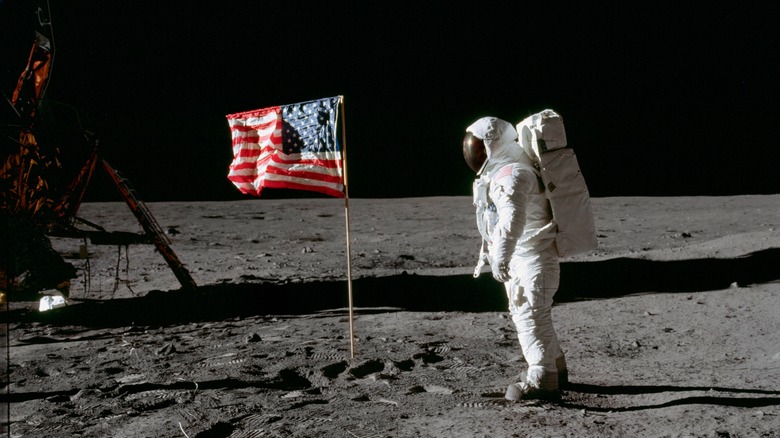How Much Did NASA's Apollo Program Actually Cost The US?
That's one small step for a man. One very expensive leap for the United States. Okay, sure, some would argue focusing on the total cost of the Apollo program defeats the purpose. Stepping onto the lunar surface was a remarkable endeavor with no arguments there. But that doesn't change the fact that it probably did cost a lot of money to achieve. What was the total bill, all said and done? What would it be today when adjusted for inflation? Spanning the years between 1960 and 1973, the program itself cost about $20.6 billion, including costs for the spacecraft, launch vehicles, and development and operations leading up to the actual missions. If you add in the costs of the ground facilities, worker salaries, and overhead, that grows to about $25.8 billion. Adjusted for inflation in 2025, using the current Consumer Price Index (CPI), that's about $189 billion.
However, if you also include Project Gemini and the robotic lunar program, which came before Apollo and shouldn't be ignored, the true cost is more like $28 billion, adjusted to $280 billion in 2025. That's a lot of dough. It's also how much Jeff Bezos, one of the richest men on the planet, is currently worth — more, actually. Other than imagining the massive trove of money, it does highlight how much went into the 13-year manned moon missions, not just in terms of monetary value but total cost. It would eventually lead to six successful lunar landings before the United States shuttered the program, a feat that certainly stands the test of time.
What were the Apollo missions?
Starting with Apollo 1 in 1967, the first actual mission, the Apollo program spanned 17 missions until December 1972, when astronauts Eugene Cernan and Harrison Schmitt moonwalked several times, collecting a record amount of samples from the moon's surface. Of course, the real highlight was Apollo 11, where famed Neil Armstrong and Edwin "Buzz" Aldrin became the first ever humans to walk on the surface of the moon, in July 1969. NASA actually rebroadcast the landing and moonwalk for the 50th anniversary back in 2019.
These missions, in full, carried out on the lunar surface and leading up to it, were what the Apollo program was all about. As part of a national effort, and a space race against competing nations to be the first to make history. It might have been costly, but it led to many achievements and a wealth of knowledge. In fact, during Apollo 11, astronauts installed an experiment on the moon that's still working today, a glass prism array to help measure the distance between Earth and the moon. Another interesting outcome, from Apollo 14, is the origins of NASA's moon trees, which are still all over the United States and thriving today.
But leading up to the Apollo program, the United States had to build everything from scratch. Project Mercury and Project Gemini were instrumental in helping NASA build the technologies, skills, and strategies needed to successfully place a human on the moon. Equipment devised in those missions is what would eventually become the Apollo spacecraft, a three-part ship composed of the command module (CM), the service module (SM), and the lunar module (LM). At the time, it was a modern marvel, and still is an impressive feat, considering NASA hasn't been back to the moon since.

